Key takeaways:
- The anti-death penalty movement emphasizes the value of human life, the potential for rehabilitation, and systemic inequalities in the justice system.
- Raising awareness through personal stories and data challenges misconceptions about the death penalty as a crime deterrent and fosters empathy.
- Engaging with community organizations and utilizing social media are key methods for increasing awareness and sparking meaningful conversations.
- Encouraging personal action, such as writing to officials or sharing personal narratives, empowers individuals to contribute to the movement against the death penalty.

Understanding the anti-death penalty movement
The anti-death penalty movement is rooted in the belief that every human life has value, regardless of the actions taken by individuals. This perspective resonates deeply with me; I often reflect on the irreversible nature of capital punishment and wonder about the potential of rehabilitation. Can a society truly call itself just if it permits the state to take a life?
I remember attending a rally where I met families of death row inmates who shared personal stories of love and loss. Hearing their pain humanized what is often a cold legal discussion about punishment. It made me question: what does it mean to seek justice? Isn’t true justice about understanding, healing, and making amends rather than simply opting for execution?
The movement also highlights the systemic inequalities inherent in the justice system. It’s disheartening to see how socio-economic status and race can heavily influence who receives the death penalty. This reality prompts me to wonder: if we truly value fairness, how can we justify a system that disproportionately affects marginalized communities?
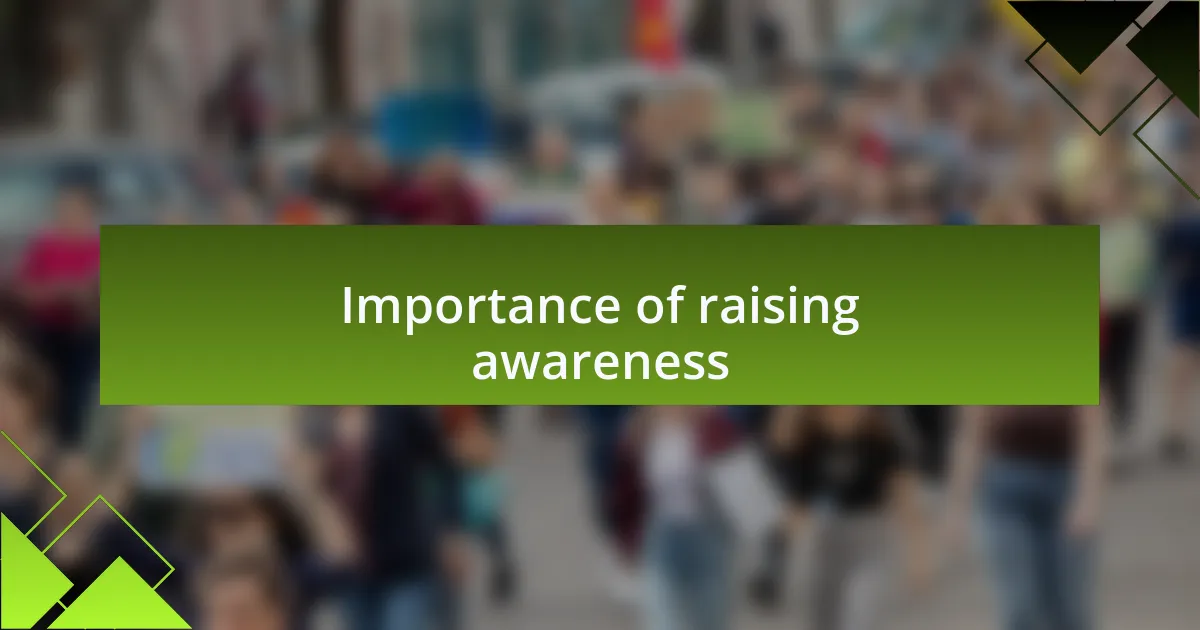
Importance of raising awareness
Raising awareness about the death penalty is crucial because it challenges the misconception that the practice is a deterrent to crime. I often find myself hearing friends and family assert this belief, prompting me to respond with data showing that states without the death penalty often have lower homicide rates. It’s fascinating how shifting the narrative can influence opinions, isn’t it?
Moreover, awareness campaigns foster empathy towards those on death row and their families. I recall reading an article that featured an interview with a former inmate who was exonerated after years in solitary confinement. Understanding his journey made me realize how imperative it is to spread the message: these are not just statistics; they are real lives affected by a flawed system. How can we ignore their stories?
Ultimately, raising awareness serves as a powerful tool for advocacy. I’ve witnessed firsthand how engaging discussions can ignite passion in others, leading them to take action. Sharing information, hosting events, and using social media are simple yet effective ways to create a ripple effect. Why wouldn’t we strive to ignite change in our communities?
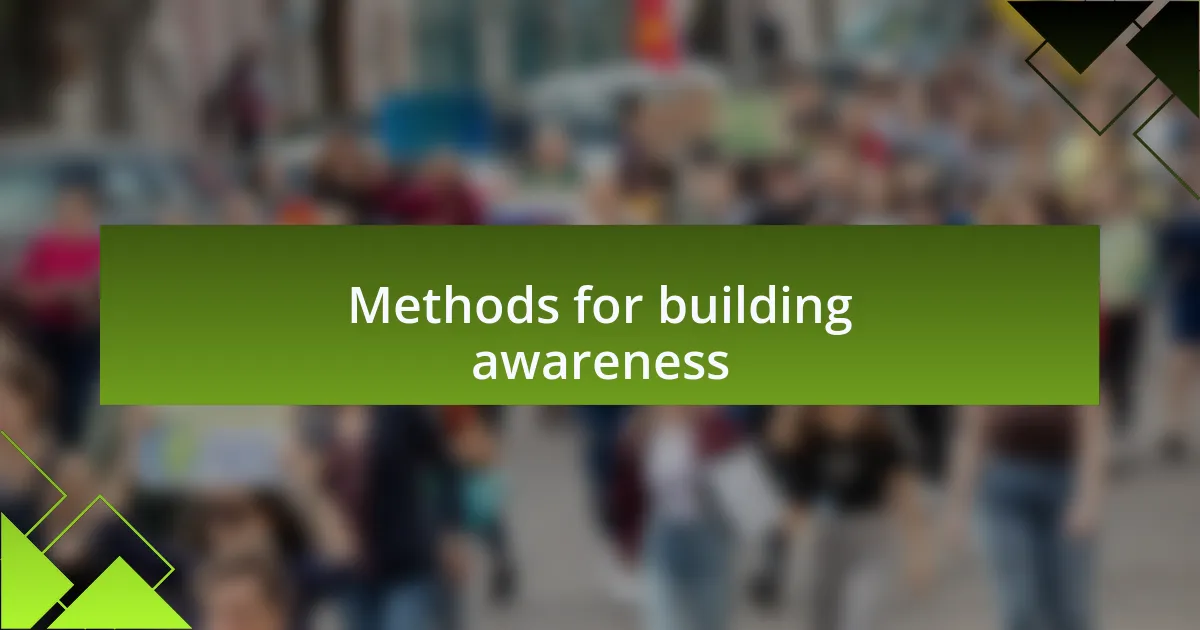
Methods for building awareness
One effective method for building awareness is through storytelling. Personally, I’ve found that sharing personal experiences related to the death penalty can resonate deeply with audiences. For instance, when I attended a local forum where a survivor of a wrongful conviction spoke, I saw how powerful his story was in shifting perspectives. How often do we overlook the human element in discussions about justice?
Social media is another robust platform for raising awareness. I recall a campaign I participated in that used powerful visuals and poignant quotes. By sharing these on platforms like Twitter and Instagram, I was amazed at the number of conversations sparked among friends and followers. It made me wonder: could a simple post really inspire someone to dive deeper into the issue?
Lastly, community outreach can play a significant role in increasing awareness. While volunteering at a local organization focused on criminal justice reform, I helped organize workshops that educated attendees about the realities of the death penalty. The questions raised by participants highlighted a genuine curiosity and eagerness to learn more. Isn’t it inspiring how face-to-face interactions can foster a deeper understanding of such critical issues?
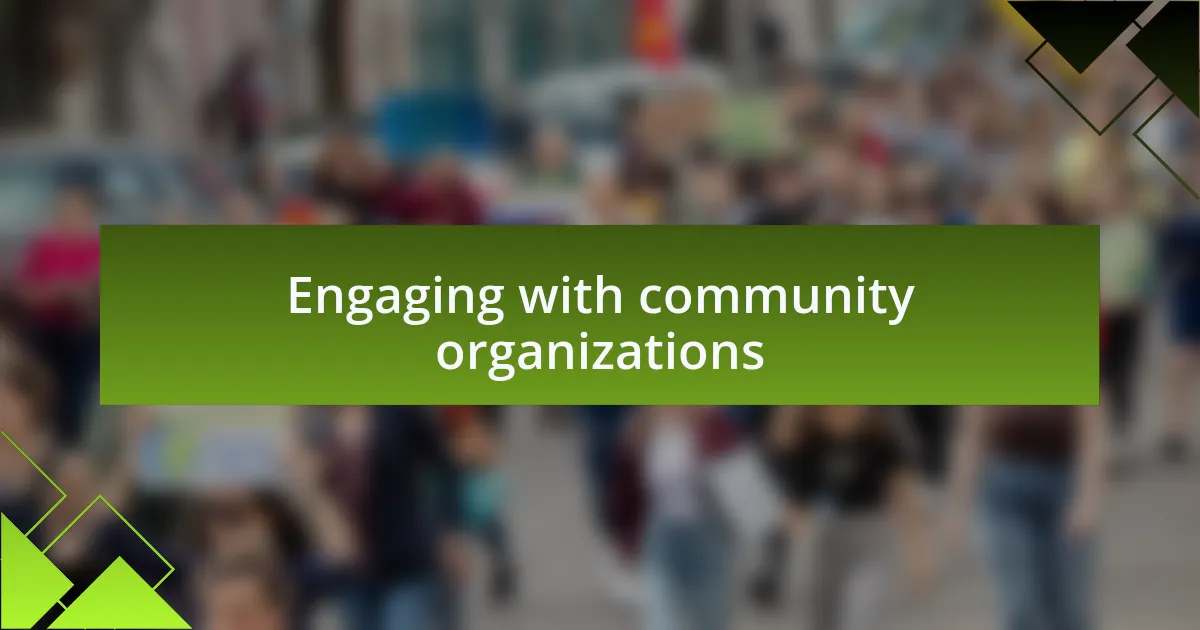
Engaging with community organizations
Engaging with community organizations can be a transformative experience. I remember when I teamed up with a local advocacy group focused on death penalty abolition. The energy in the room was palpable during our brainstorming sessions, as we discussed strategies to reach a wider audience. It made me realize how collaboration amplifies our voices—together we can create a ripple effect that spreads awareness far beyond individual efforts.
During one event, I had the chance to facilitate a panel discussion with legal experts and activists. The dynamic exchange of ideas invited questions from the audience that often sparked deeper conversations. I observed that when community members felt their thoughts were valued, they were more inclined to engage meaningfully with the topic. Why is it that an open forum feels more personal and impactful than merely reading statistics online?
One particularly memorable collaboration was a joint art project with a local artist. We created pieces that depicted the stark realities of life on death row, which were displayed at a community center. The conversations that emerged from those artworks were eye-opening, revealing how art can bridge gaps in understanding. Isn’t it fascinating how creativity can inspire empathy and provoke thought in unexpected ways?
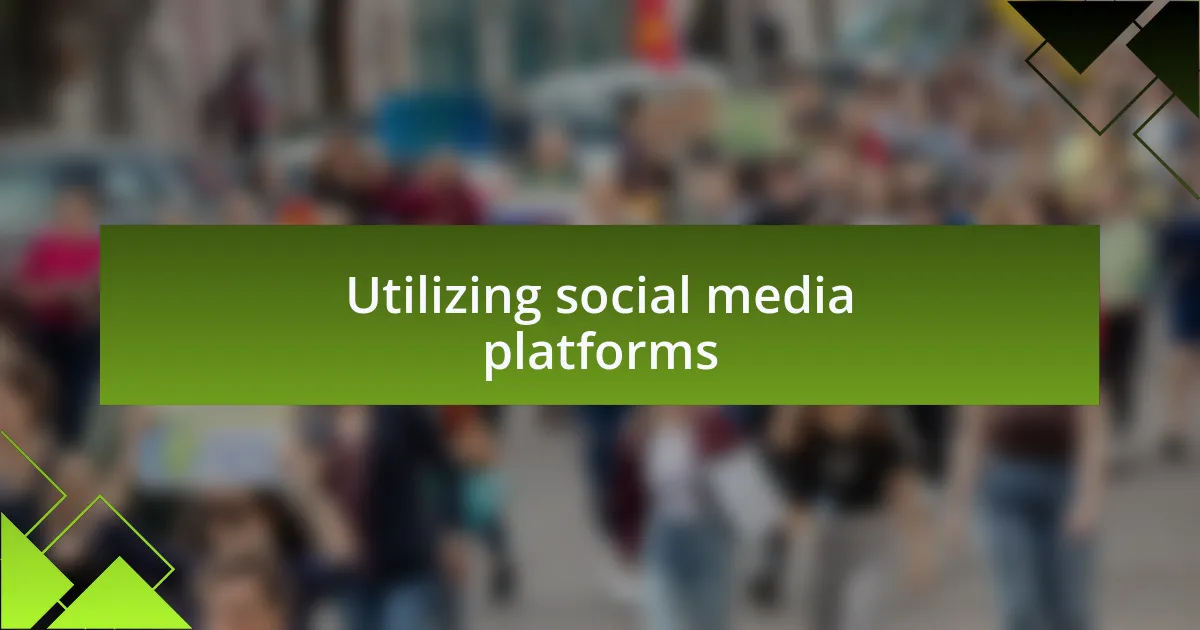
Utilizing social media platforms
Utilizing social media platforms has proven to be a game changer in raising awareness about the anti-death penalty movement. I recall one of my first posts on Twitter, where I shared a compelling infographic that illuminated the inequalities in capital punishment cases. The response was overwhelming! People from all walks of life chimed in, sparking conversations that hadn’t existed before. It was a powerful reminder of how social media can serve as a catalyst for discussion, reaching far beyond those who may already agree with us.
I also discovered that creating engaging content is crucial. One time, I recorded a short video where I shared a personal story about a wrongfully convicted individual whose life was forever changed by the death penalty. Through a platform like Instagram, where visuals reign supreme, that post reached thousands and ignited a dialogue in the comments section. Isn’t it intriguing how a simple narrative can provoke such emotional responses and encourage others to share their stories too?
Moreover, I’ve found that using hashtags strategically helps in connecting with broader movements. During a campaign, I joined a trending hashtag related to human rights, which allowed my posts to blend into a larger narrative. This experience taught me how vital it is to be part of a bigger conversation—by amplifying existing dialogues, we invite more people to educate themselves and join our cause. Isn’t it amazing how social media can create a sense of belonging in a movement that can sometimes feel isolating?

Sharing personal stories and experiences
I vividly remember attending an anti-death penalty rally where a family member of a victim spoke passionately about their experience. Their story wasn’t just about loss; it was about a fight for justice that resonated deeply with everyone present. Listening to their words, I realized that personal stories humanize the broader issue, making it not just statistics, but a collection of real lives impacted by a flawed system.
Another moment that stands out was when I shared my grandfather’s story of being wrongfully accused of a crime. Even though he wasn’t sentenced to death, the fear and despair we felt as a family during that time left lasting marks. By sharing this experience online, I opened up a space for others to share their own stories, igniting a powerful discussion about the potential for wrongful convictions and the need for reform in our justice system. It’s incredible how one personal narrative can create a wave of vulnerability and solidarity among those who have suffered similarly.
Last year, I participated in a podcast where I recounted my experiences advocating against the death penalty. The response was touching, with listeners reaching out to share their own connections to the issue. I was moved by how many people felt empowered to speak out after hearing my story. It made me wonder—what if everyone shared their experiences? Perhaps, together, we could foster a movement filled with compassion and understanding, ultimately leading to real change.
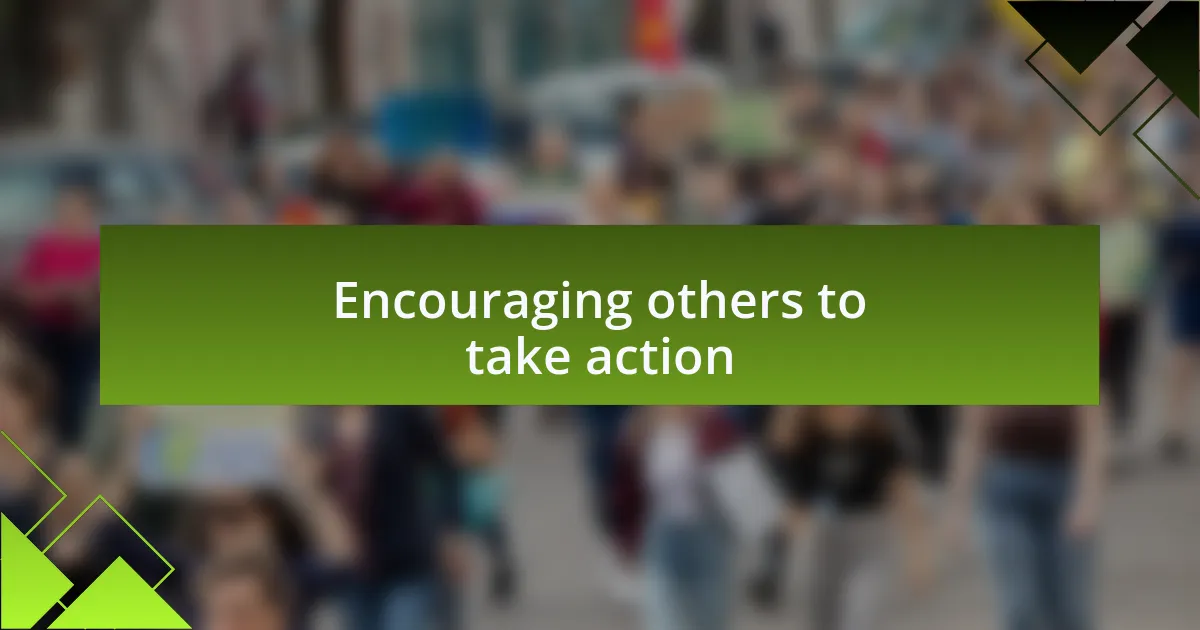
Encouraging others to take action
I often find myself at community events, urging others not just to listen, but to get involved. One evening, a friend shared how they felt overwhelmed by the enormity of the issue, wondering if a single action could truly make a difference. I gently reminded them about how even small actions accumulate, like drops in a bucket that eventually fill it up. This conversation really cemented the idea for me: everyone has a role to play in this movement.
During a recent discussion group, I encouraged participants to write letters to elected officials about their stance on the death penalty. I could see the hesitation in their eyes as they pondered if their voices really mattered. I shared my own experience of receiving a response from my local representative after sending a simple email—it reminded me how even a few sentences can spark dialogue. Seeing their interest peak made me realize that demystifying the process of advocacy boosts confidence in others to take the leap.
Another transformative moment happened when I initiated a social media campaign, challenging friends and family to share why they oppose the death penalty. The flood of thoughtful responses made me think: What if more people felt empowered to use their platforms? It’s revealing how when we make the conversation personal, it inspires action; suddenly, the issue isn’t just an abstract idea, but a movement fueled by collective passion and stories.